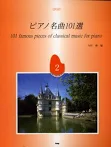Debussy, Claude Achille : Children's corner
Work Overview
Publication Year:1908
First Publisher:Durand
Instrumentation:Piano Solo
Genre:pieces
Total Playing Time:15 min 00 sec
Copyright:Public Domain
Commentary (2)
Author : PTNA Piano Encyclopedia Editorial Department
Last Updated: January 1, 2010
[Open]
Author : PTNA Piano Encyclopedia Editorial Department
- "Doctor Gradus ad Parnassum"
- "Jimbo's Lullaby"
- "Serenade for the Doll"
- "The Snow is Dancing"
- "The Little Shepherd"
- "Golliwog's Cakewalk"
Analysis of 'Golliwog's Cakewalk'
"Golliwog's Cakewalk" depicts the cheerful dancing of Golliwog, a mechanical doll, to the cakewalk, an American Black dance. While the piece is characterized by its light and distinctive rhythm, the middle section shifts to a languid mood, and it is particularly interesting how fragments ofWagner's "Tristan und Isolde" melody appear.
Author : Hayashikawa, Takashi
Last Updated: April 18, 2019
[Open]
Author : Hayashikawa, Takashi
Debussy: Children's Corner - Commentary
This suite, composed between 1906 and 1908, was dedicated to Claude-Emma (1905–19), the only daughter born to Debussy and Emma Bardac (1862–1934), affectionately known as Chouchou (hereinafter referred to by her nickname).
Even before meeting Emma, Debussy had been teaching piano to her son, Raoul. In 1903, Raoul invited Debussy to his home, which led to Debussy meeting Emma. Despite both being married, they developed an intimate relationship, and Chouchou was born on October 30, 1905. Towards the end of the same year, Debussy was commissioned by Octavie Carrier-Belleuse (1857–?, a Parisian piano teacher and daughter of sculptor Albert-Ernest Carrier-Belleuse) to compose a short piece for a piano method book. The following year, in 1906, "Serenade for the Doll" was composed as a standalone piece (this method book was not published until 1910).
Subsequently, the remaining pieces were composed in 1908. In June of the same year, "Serenade for the Doll" was first published independently. The complete score was published in September of the same year, bearing the dedication: "To my dear Chouchou, with her father's tender apologies for what is to follow. C.D." The cover art depicted a Black doll (Golliwogg) leading an elephant against a snowy background. This illustration was drawn by the composer and pianist Gaston Choisnel (1857–1921), based on Debussy's own sketches.
It is noteworthy that all the original titles of this work are written in English. This is said to be either due to Emma's Anglophilia or because Chouchou's nanny was English and taught her the language.
In 1908, the year this suite was completed, Debussy's marriage to Emma was also finalized after a tumultuous period. On December 18 (some sources state the 23rd) of the same year, the premiere of "Children's Corner" was given by the British pianist Harold Bauer (1873–1951). According to Bauer's memoir, His Book (New York: W. W. Norton, 1948), Debussy was so anxious during the premiere that he did not remain in the audience but paced back and forth outside the hall. After the performance, when Bauer came to see him, Debussy asked, "How was it?" Upon Bauer's reply, "Everyone was laughing," Debussy finally relaxed and expressed his gratitude.
Furthermore, three years after the composition of the piano version, in 1911, an orchestral arrangement was created by André Caplet (1878–1925) under Debussy's own supervision. This arrangement was premiered on March 25 of the same year by the Boston Symphony Orchestra conducted by Caplet. Moreover, in 1912, the following year, Debussy himself played and recorded this work on a roll for the Welte-Mignon player piano, which can now be heard on CD.
Movements (6)
PTNA & Partner Channel Videos(33items) View More
Sheet MusicView More
Scores List (78)

(株)エー・ティ・エヌ

(株)ドレミ楽譜出版社

(株)全音楽譜出版社

(株)全音楽譜出版社

カワイ出版

(株)音楽之友社

(株)ヤマハミュージックエンタテインメントホールディングス

(株)全音楽譜出版社

(株)全音楽譜出版社

(株)音楽之友社

KMP(ケイ・エム・ピー) ケイエムピー

(株)ヤマハミュージックエンタテインメントホールディングス

ハンナ(ショパン)

(株)ドレミ楽譜出版社

ミュージックランド

(株)リットーミュージック

ミュージックランド

ミュージックランド

KMP(ケイ・エム・ピー) ケイエムピー

(株)リットーミュージック

ミュージックランド

ミュージックランド

ミュージックランド

(株)ドレミ楽譜出版社

(株)全音楽譜出版社

ハンナ(ショパン)

ハンナ(ショパン)

ハンナ(ショパン)

ミュージックランド

(株)ドレミ楽譜出版社

ハンナ(ショパン)

(株)ドレミ楽譜出版社

(株)ドレミ楽譜出版社

(株)ドレミ楽譜出版社

ハンナ(ショパン)

ハンナ(ショパン)

(株)ドレミ楽譜出版社

(株)ドレミ楽譜出版社

ミュージックランド

(株)全音楽譜出版社

ミュージックランド

(株)全音楽譜出版社

(株)全音楽譜出版社

ミュージックランド

ミュージックランド

(株)シンコーミュージックエンタテイメント

(株)ヤマハミュージックエンタテインメントホールディングス

(株)ドレミ楽譜出版社

(株)ドレミ楽譜出版社

ヘンレー

ヘンレー

ベーレンライター社

ヘンレ社(ヤマハ)

ヘンレー

(株)東音企画(バスティン)

(株)音楽之友社

(株)ヤマハミュージックエンタテインメントホールディングス

(株)学研プラス

(株)ヤマハミュージックエンタテインメントホールディングス

Neil A. Kjos Music Company

Neil A. Kjos Music Company

Neil A. Kjos Music Company

Neil A. Kjos Music Company

Neil A. Kjos Music Company

Neil A. Kjos Music Company

Peters

Peters

Peters

ミュッセ

(株)全音楽譜出版社
























